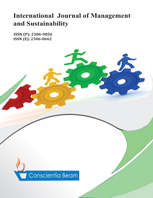Mental Disorders Signs in Afghan Immigrants/Refugees
DOI:
https://doi.org/10.18488/journal.11/2015.4.2/11.2.26.38Abstract
Introduction: The goal of the study was to identify mental disorders signs in Afghan immigrants/refugees who lived in Tehran, Iran. Materials & Methods: In this research 453 Afghan immigrants/refugees (227 male and 226 female) were selected by cluster sampling from different areas of Tehran city. Instruments were a demographic questionnaire and GHQ-28 that completed by Afghan interviewers. Data were analyzed using descriptive analysis. SPSS software was used for analysis. Results: Findings showed that on the subscales of GHQ-28, prevalence of mental disorders signs in Afghan immigrants/refugees was high. Prevalence of Somatic signs was 6/3%- 15/1%, Social dysfunction signs were 3/2%-16/7%, Anxiety/insomnia signs were 7/5%-16/3% and Severe Depression signs was 2/8%- 21/8%. The most common signs on the subscale of Somatic symptoms were feel run down and out of sorts (15/1%), and getting any pains in the head (11/9%), on the subscale of Anxiety/insomnia were loose of much sleep over worry, feel constantly under strain social dysfunction (each of them 16/3%), feel nervous and strung-up all the time (14/3%), and getting edgy and bad-tempered (12/3%), on the subscale of Social dysfunction was being able to enjoy your normal day-to-day activities (16/7%), on the subscale of Severe Depression were feel that life is entirely hapless (21/8%), feel that life isn’t worth living(19/4%), find yourself wishing you were dead and away from it all(15/9%), and being thinking of yourself as a worthless person (10/7%) Conclusion: Mental disorders signs had high prevalence in Afghan immigrants/refugees. So attention to mental health of them is necessary. Mental health care, psychiatric/psychological interventions are recommended for them. In providing of comprehensive/ widespread mental health services, attention to religion/spirituality, and religious/spiritual interventions, is very important, which they consequently will increase self-efficacy and in turn, will promote mental health in them. It should be taken a community approach for providing such interventions. In the community approaches, primary prevention, treatment and rehabilitation are doing, in any level of health services, in inner of immigrant/refugee community. Specific aspect of this approach is insistence on participation in collective action, training in prevention of mental disorders and psycho educational training

